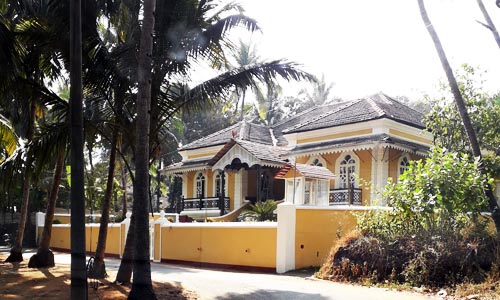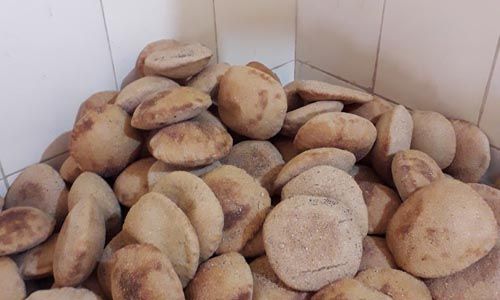Because of the wealthy non-Goan or ‘outsider’ no Goan village is as it was two decades ago. In bigger towns too like Vasco, Margao, Panjim, except (mercifully) in the odd old quarter of town where landholdings are just too tiny to interest greedy developers. Non-Goan builders even hire non-Goan architects which has a cascading effect. The old Goan way of life is fast deteriorating any way you look at it.
March 10, 2019
Lionel Messias
Where is my Goa gone?
There is this thing a few middle-class Goans (like me) do for a lark. Browse through the Goa Times (the Times of India pull-out) to know where well-heeled non-Goans and a few foreigners got hammered and at which lounge bar – over the weekend especially, and then get plastered (pun intended) all over the magazine. The punchline of this humour is Goa has morphed into a Greater kailash, a Defence Colony or a Saket of New Delhi. The ethnic Goan on the Goa Times is like a bird species going instinct. As if, we already didn’t know that.
It is not really the total transformation of the entertainment industry that concerns them; rather the changing topography of many villages like Moira and Bastora where yesterday’s narrow lanes are often as wide as today’s SUVs choking these lanes, parked outside the Indo-Portuguese homes the bludgeoning non-Goan population have bought.

A traditional Goan mansion sold by a builder/hotelier family of Velsao to a person from Switzerland, who sold it to a wealthy non-Goan, who changed it beyond recognition. It is in the Pale area of Velsao.
Goa or Greater Kailash
Because of the wealthy non-Goan or ‘outsider’ no Goan village is as it was two decades ago. In bigger towns too like Vasco, Margao, Panjim, except (mercifully) in the odd old quarter of town where landholdings are just too tiny to interest greedy developers. Non-Goan builders even hire non-Goan architects which has a cascading effect. The old Goan way of life is fast deteriorating any way you look at it. It’s getting dangerous too as crime grows at a disturbingly fast pace. This is how middle-class Goans, who have been reduced to becoming only armchair critics, see it. To whine about ‘the good old past’ and to do nothing about it, are in equal parts, new-age Goan folklore, if that makes sense.
Wealthy outsiders are buying Indo-Portuguese houses before they run out. In north Goa, Goan ownership perhaps already has, except for a few wealthy Goans who intend to retain them despite the high maintenance cost. The say-so desire of the non-Goan to own these mansions is so clichéd it is suspect. Topping the list is: “We fell so much in love with Goa, we just had to buy a mansion here.” To imaginative fiction deserving of an Oscar for script writing: “….the minute we saw the house, we realized that it had all the potential and was crying out for some tender love and care.” This was said by the new owner of a Bastora house and quoted in the Goa Times. This writer knows of a non-Goan who bought a house in Bastora and later sold it to another non-Goan.
What these non-Goan buyers don’t tell you is that their initial craving for a heritage house later always turns into a yearning for modern utilities and ‘restoration’ – which always means refurbishing the entire insides of the house. Heritage flushed down their brand new Kohler equipped toilet.
A non-Goan architect who herself bought one in 2006 and is now ‘re-inventing’ these old mansions told the Goa Times in July 2018: “Living in these houses offers a unique way of life….while staying close to nature in such relaxed spaces has proven to be calming.” Another architect in the same article said: “Adapting the space to accommodate our present lifestyles, such as the need for attached bathrooms, air-conditioning, garages for parking, is a challenge.” As goanspirit sees it the contradictions are glaring.
The truth of the matter, the paper said was while a heritage home is a symbol of luxury for a few, it mostly offers opportunity to earn money as expensive homestays and or restaurants and cafes.
Goa, Gulf for Migrants
To the working class Goan, what matters is: “You can’t ask for directions any longer because everyone on the road is a migrant.” Heavily taxed, he pays a high price for everything he wants, a home included. Not the migrant. Forced into desperation and anger by the constant acquisition of his land by the political desire - motivated by greed only - to build massive road infrastructure no Goan wants; he sees the migrant getting away scot free with grabbing land free of cost wherever he can. No so-called social infrastructure like the many Ravindra Bhavans/mini Kala Bhavans are properly utilized, with the exception of the Margao Ravindra Bhavan. Their extremely high maintenance cost being another matter.
Some years ago this writer exposed how it cost Rs 54,95,692 to install a new sound system at the Margao bhavan. The amount spent on the old sound system was Rs 24,06,325. A total of Rs 79,02,017! It cost the taxpayer Rs 38,52,800 to replace the chairs. The total cost on capital expenditure incurred till I investigated the colossal waste was Rs 25,63,74,861. The cost of maintenance incurred since its inauguration was Rs 26,93,537. The Margao bhavan was partly constructed on Communidade land acquired by the government.
Even the many industrial estates do not benefit Goans except in the case of the contracted packaging jobs which are; always low paying, carry a guaranteed break in service and may or may not offer of another contracted year after the long break. Even these jobs are got only after paying the labour contractor hired by the company a commission.
In January, 2019 the Congress party warned that the proposed Multi-Modal Logistics Park in Panjim apart from being a guaranteed environmental disaster, “would be yet another project to tackle the unemployment problems faced in neighbouring States.” Nothing could be truer. A drive through the massive Verna Industrial Estate is a stark example of Goans not getting employment in these industrial estates. In fact, it is a job haven for Karwar in Karnataka approximately 85 km from Verna via NH 66. The industrial estate also has visibly more non-Goan entrepreneurs than Goans.
Even panchas and sarpanches
Migrants, without exception, provide the entire construction industry’s workforce, the allied support industries included. The irony is that while migrants move like gypsies from one construction site to another, building illegal dwellings with the money earned, on any bit of land they can lay their hands on – particulary communidade land; Goans with the exception of a few well-heeled or employed abroad, can no longer afford the expensive apartments. But, this does not deter the builder, again an overbearing non-Goan with a cash flow that would make big banks see red. In fact, migrants have become panchas, sarpanch even.
In July 2018 in a brazen example of land grab - by migrants mainly – exposed by Goa’s only newspaper with Goan leanings, it was revealed that nearly 35,000 sq.mt of slope land between the villages of Saligao and Pilerne, was illegally occupied.
Area names, where migrant populations totally dominate, have been changed from their original Goan names, to Upasnagar, Shantinagar, etc.
During demonetization, this writer saw two hotels off the NH 17 bypass (one huge, the other small) and several extremely large building complexes on the same bypass continue to be built; unhindered by the severe cash crunch witnessed by the long snaking queues outside ATMs. The two hotels are owned by non-Goans as do the building complexes.
(Next: Crime’s Middle Name is Migrant)




